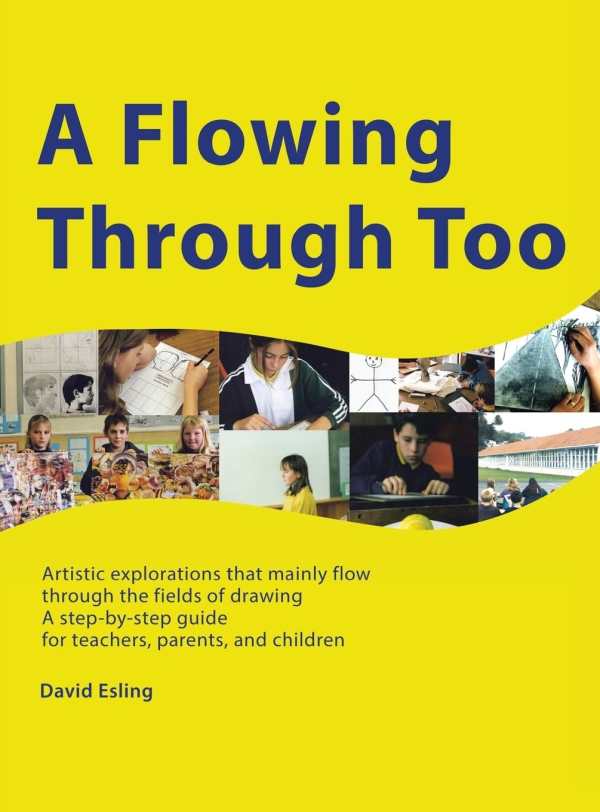A Flowing Through Too
Artistic Explorations That Mainly Flow through the Fields of Drawing: a Step by Step Guide for Teachers, Parents, and Children
A helpful art teacher’s guide, A Flowing Through Too models helping young art students navigate the technical and emotional challenges of their projects.
David Esling’s memoir–cum–instructor’s guide A Flowing Through Too models teaching art to young students.
This lavish illustrated book is a case study in unlocking students’ artistic potential. It uses the examples of Esling’s Tasmanian students—who, in the 1990s, collaborated and pushed past boundaries to make art—to frame its suggestions of art projects for fellow educators. Indeed, photographs of the children’s finished artwork, of their interactions with one another, and of their drawing and sculpting in progress take up considerable page space.
In addition to its examples, the book forwards guidance through portrait drawing, sculpting, and kiln work—challenging projects that Esling’s students tackled, complete with illustrations of their progress and final results. Anecdotes regarding how the students reacted to their work and about how they understood their art flesh this work out further, as with recreations of student exchanges:
“Can I sketch another portrait now?” asked Chris.
“Of course you can. Would you like to draw one without the use of grids?” asked Mr E.
“No, not yet. I think I need a little more practice.”
However, the book’s photographs were taken with older cameras, sans sharp clarity; they have a dated quality.
Meticulous in chronicling both individual students’ progress and that of whole classrooms, the book reflects clear pedagogical perspectives on the importance of peer bonding in educational settings and the significance of healthy teacher-student dynamics. Each chapter covers a different artistic technique via a combination of personal stories and explanations of their technical benchmarks. This hybrid approach helps to humanize the book’s analytical explanations, showing how Esling’s students reacted to their teacher and their peers in the course of fulfilling their assignments.
The prose is conversational and direct; each named technique is easy to understand. The fundamentals of art are addressed alongside the developing mindsets of students, and empathy is evident in discussions of how students have their own burdens outside of the classroom that can impact their academic focus. Encouragements to build students’ confidence and push their boundaries and limitations are included, helping to improve educators’ emotional literacy in addition to suggesting specific projects. In the end, multiple levels of educator understanding are represented in this teacher’s diary and manual.
A teacher’s nostalgic memoir and artistic guide, A Flowing Through Too instructs fellow educators on helping young art students navigate the technical and emotional challenges of their projects.
Reviewed by
Alexandra Kitty
Disclosure: This article is not an endorsement, but a review. The publisher of this book provided free copies of the book and paid a small fee to have their book reviewed by a professional reviewer. Foreword Reviews and Clarion Reviews make no guarantee that the publisher will receive a positive review. Foreword Magazine, Inc. is disclosing this in accordance with the Federal Trade Commission’s 16 CFR, Part 255.

